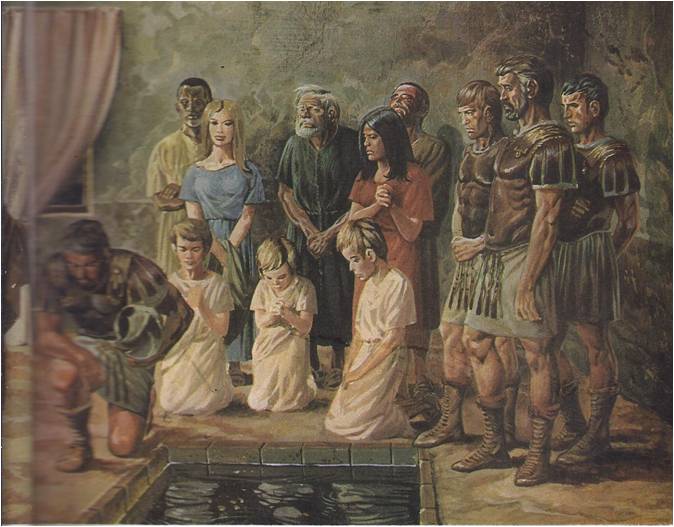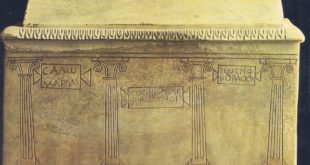JESUS lived and died a Jew. Like the ancient Hebrew teachers, he urged people to love God and to love their neighbours. He left no writings of his own. His public ministry was short, possibly not as long as two years. It seems probable, therefore, that his influence on world history might not have been nearly as great had his story ended on the cross.
The gospel story does not end with his crucifixion. He died on Friday. To speed the death of those crucified on Fridays, so that they could be buried before the Sabbath, the legs of the victims were usually broken. The soldiers broke the legs of the thieves hanging on either side of Jesus. But since Jesus seemed to be dead already they did not break his legs. To make certain he was dead one of the soldiers thrust his spear into the side of Jesus.
One Joseph of Arimathea received permission from Pilate to take away the body of Jesus. This he did with the help of friends and placed the body, in a new sepulcher in a nearby garden. The grave was really a cave hollowed out of rock in the side of a hill. Over the entrance they rolled a huge stone.
The following day being the Sabbath, nothing more could be done. Early Sunday morning, Mary Magdalene and other followers of Jesus brought sweet spices to anoint his body. But they found the stone rolled away and the tomb empty. Puzzled and frightened, the others left the place, but Mary did not leave. While she was weeping by the side of the tomb Jesus suddenly appeared before her.
That same evening in Jerusalem, Jesus appeared before a number of disciples gathered together in a locked room. The disciples were terrified, for they thought Jesus to be a spirit.
“Why are you troubled?” Jesus asked. “See my hands and my feet, that it is I myself; handle me, and see; for a spirit has not flesh and bones as you see that I have.”
They still stared at him, doubting.
Have you anything here to eat?” he asked.
They gave him a piece of broiled fish and a honeycomb. He took these and ate before them.
The gospel tells how Jesus appeared in various other places. He met the apostles again in the mountain of Galilee and instructed them to teach all nations, “baptizing them in the name of the Father and of the Son and of the Holy Spirit . . .”
The gospel story, as told by Luke in the King James version of the Bible, ends with these lines: “And it came to pass, while he blessed them, he was parted from them and carried up into heaven. They worshiped him and returned to Jerusalem with great joy: and were continually in the Temple, praising and blessing God. Amen.”
A JEWISH SECT
This, then, is the gospel story of Jesus Christ. His followers were so convinced that he had risen from the dead and had ascended into heaven that his resurrection became the very core of their faith. Jesus had risen. He had conquered death. He was therefore truly the Son of God, the long-Promised Messiah of the prophets.
His followers gathered daily in the Temple to carry out the religious duties of their Jewish faith. In addition, they held meetings of their own in private houses to say special prayers to gather and to observe the “breaking of the bread” at their daily meals. The breaking of bread had a sacred meaning, for it served as a reminder that Jesus had broken bread and offered it to them as his “body” at the Last Supper. The daily meals were for all who came to the meetings and helped to create a bond of fellowship among the believers. By this practice, too, the poor were fed. None of them were rich, but they shared what they had with each other.

At first they attracted little attention. They seemed to be merely another Jewish sect and within the Jewish faith there were a number of sects. There were the Pharisees, for example, the experts in the Law, who wore a particular type of robe. The Sadducees, another sect, did not believe in angels, or heaven, or in life after death. The Essenes lived in small communities in the wilderness about the Dead Sea, avoiding all contact with the outside world. The followers of Jesus adopted no special dress. Their meetings were open to all Jews and new members were constantly being recruited.
Most Jews did not accept Jesus as the Messiah. Their Messiah, the one they were expecting, would lead them to victory against the Romans and bring glory to Israel and peace to the world. But Jesus had come and gone and the Romans were still there. Jesus had changed nothing. Therefore he could not possibly be the Anointed One.
Yet, the faithful following of Jesus began to grow. Many new members were added during the celebration of Pentecost, one of the Jewish holy days. On that day, during the usual meeting, the disciples suddenly had a deep religious experience, which convinced them that they had received the Holy Spirit. This gave them new courage. Peter went out and preached to the crowd in the street and told them, “Repent, and be baptized every one of you in the name of Jesus Christ for the forgiveness of your sins and you shall receive the gift of the Holy Spirit.”

That day some three thousand new members were added. Soon the “brethren” of the church had increased to five thousand. So encouraged were Peter and John that they preached boldly in the Temple. They were arrested on two different occasions and once they were beaten with rods. Jewish authorities were becoming concerned about the rapid growth of the new sect. It had spread to the countryside and even beyond the borders of Palestine. Travelers and religious pilgrims constantly going to and from Jerusalem were telling the story of Jesus wherever they went. Many early followers of the new sect were Greek-speaking Jews from Jewish colonies in distant parts of the empire. The Roman Empire stretched from the Euphrates on the east to the Atlantic on the west, from the Rhine on the north to the rapids of the Nile on the south. Jewish colonies probably existed in every province of the empire at the beginning of the Christian Era. The Jews of these colonies spoke Greek, the language of culture and commerce of the empire, but the widely scattered Jews were still one people, bound together by their religion. Whenever they could, they went to Jerusalem to celebrate their religious festivals and there they met the brethren of the new sect.
The Greek-speaking or Hellenistic Jews, as they were called, had lived in exile so long and had heard so many new ideas in other lands that they were more open-minded than the Jews living in Palestine. New ideas did not frighten them. So they were willing to listen when the brethren spoke of Jesus as the Messiah. Many were baptized and returned to their homelands to establish churches and to preach the gospel of Jesus Christ.
As the church in Jerusalem grew, seven Greek speaking Jews were appointed as deacons. One of these was named Stephen, who soon became a missionary of great force. He kept hinting in his speeches that the old religion would have to give way to the new. Many Jews were alarmed. They saw in Stephen a dangerous enemy who was trying to do away with their religion. They arrested him and bought him before the Sanhedrin, the same council of elders that had condemned Jesus. They soon found him guilty and sentenced him to die.
The Roman governor, who alone had the power to give the death sentence, was not in the city at the time. The people were in no mood to wait for him. Dragging Stephen out beyond the city walls, they threw stones at him until he was dead. In the howling mob was a young man from Tarsus, watching the execution with approval. His name was Saul. Stephen was the first of the Christian martyrs. His death set off a wave of persecution, particularly against the Greek-speaking brethren of the church. Most of them fled to their homelands and began preaching the gospel there. Thus the persecution in Jerusalem did not stamp out the new faith; on the contrary, it actually hastened its spread to other lands.

Philip, another of the Greek-speaking deacons, carried on missionary work in Samaria and on up the coast from Gaza to Caesarea, where he established a church. Later, Peter followed his path to meet the new converts and to give them the blessings of the Holy Spirit.
It was in Caesarea that Peter first had to face one of the most serious problems of the growing church. Up to that time the gospel had been preached only to the Jews. In Caesarea a Roman officer named Cornelius asked Peter to come to his house and explain the new faith. Cornelius was a pagan and as such was impure in the eyes of the Jews. They were not to associate with such a person, for it made them unclean. An unclean Jew had to go through a ritual of purification which was long and tiresome. Peter hesitated, for he remembered a strange dream that had puzzled him.
Suddenly Peter thought he understood the meaning of his dream. It was the Lord’s way of telling him that this man, too, should be accepted into the new faith. Although deeply troubled, Peter preached to Cornelius and his friends and relatives who gathered in his house and baptized them all. The brethren in Jerusalem were shocked when they heard of it. Peter had gone beyond the Law. He had broken sacred rules of the Jewish religion by associating with pagans.

Peter told them of his dream and explained that he had merely carried out the will of the Lord. There was nothing more they could say, but they wondered what it meant. Were all Gentiles, people who were not Jews, to be welcomed into the church? It was a question that was to haunt them for many years to come. If the faith were to be limited to the Jews, then it would be merely another Jewish sect. I the Gentiles were also to be included, then the gospel could be preached to all nations. The fate of the church, therefore, depended upon the answer.
Peter had set an example that was soon to be followed in other communities. The persecution had spread the gospel to such places‚ as Antioch, Phoenicia and Cyprus. It was in Antioch‚ the capital of the Roman province of Syria, that the brethren were first called Christians. There the gospel was preached to the Jews and a little later to the Greeks as well. The Jewish and Greek members lived in harmony, since the Jews were willing to disregard their laws concerning purity. However, the problems of mingling Jews and Gentiles together in one church were far from solved even for them.





